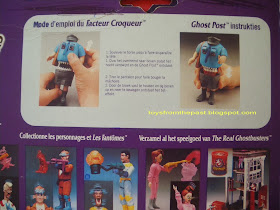SHORT HISTORY OF MONOGRAM
In 1953, Revell starting making similar kits in 1953, only in plastic, so Monogram also started producing plastic kits to compete with Revell, named "Plastikits". First models were a red plastic midget racer and a Hot Rod model A. Followed by some other models, some of them offered with C02 "Jet Power". At the time it was advertised that models were made of "acetate parts moulded to shape". At the time plastic was still quite rare in toys.
Planes were the last balsa wood toys by Monogram. The assortment was gradually changed to plastic. By 1954 the airplane series were called "Speedee Built", that were rubberband powered. The planes made of all plastic were rare, other had balsa wood fuselage but also plastic parts.
The competition on car kits came later, by the end
of the 50s. The manufacturers AMT and Jo-Han started also around 1953,
but focused first on promotional models. At some point they started with
kits, so Monogram had to react against them including more and more
models, both real and imaginary models. These competition extended for
over 20 years and many scales, ranging between 1:8 and 1:87. Some models
had even an electric motor.
During 1960, Monogram and Revell excelled over
the rest of competitors, like AMT, Jo-Han or MPC. Their catalogues were
more extensive, including not only cars, but also planes, naval craft
and military vehicles. Monogram also offered some additional features
like moving parts, or removable pieces. The 70s would characterise for larger models, including some of the most impresive cars in 1:8 scale. Those years would be dominated by Hot Rods and custom vehicles, which waa a change in the company policies, until that moment quite conservative in their models both civil and military. The responsible for these models was stylist Tom Daniels, while other companies hired George Barris, Bill Cushenberry, the Alexander Brothers (all AMT) or Dean Jeffries (MPC).
Tom Daniels would also be an important designer for Hot Wheels diecast. Monogram was bought by Mattel (also owner of Hot Wheels!) in 1968. Some models were released in both Monogram and Hot Wheels: Ice-T Buggy, the Red Baron, the Paddy Wagon, the Sand Crab, the S´Cool Bus or the Tarantula (which was also made by Mebetoys, Italian company owned by Mattel). Monogram focused on race and custom cars, while Revell would release more real cars, American or Foreign. Other designers that worked for Monogram are Tom McEwan and Don Prudhomme.
In 1984, Mattel sold off Monogram to Odyssey Partners of New York. That same year, that same company would purchase Revell of Venice, California, merging both rival companies in one. The factory would move to Des Plaines, IL, and the headquarters to Northbrook, IL. This is the time in which the Monogram Mini Exacts (in H0 scale) were released. These cars have plastic bodies and metal chassis. On this particular models, it can be read: Monogram Models 1989, but not the name of the car. The bodies are very well casted, although the colours are not very appealing. With some extra paintwork, they would be great models. The line would be sold to Herpa in the early 1990, and the chassis would be then casted in plastic instead of metal.
Revell-Monogram would be sold again in 1994 to Hallmark Cards, and again in 2007 to Hobbico (RC Airplane maker). Between 1987 and 2005, the logo of the company showed Revell logo and below Monogram logo, but since the acquisition by Hobbico, the Monogram logo has diappeared. Hobbico owns under one brand Revell, Monogram, Estes and is exclusive distributor for Hasegawa.
Cars in this entry:
-Yellow: Z-28 Camaro
-Black: Buick Grand National
-Red: Pontiac Grand Prix SE
-Blue: '89 Ford T-Bird SC
FACTS AND FIGURES:
- Name: Z-28 CAMARO (Yellow), BUICK GRAND NATIONAL (Black), PONTIAC GRAND PRIX SE (Red), '89 FORD T-BIRD SC (Blue)
- Scale: 1:87
- Year: 1989
- Company: Monogram Models (U.S.A.)
- Size: approx. 4 cm




























































